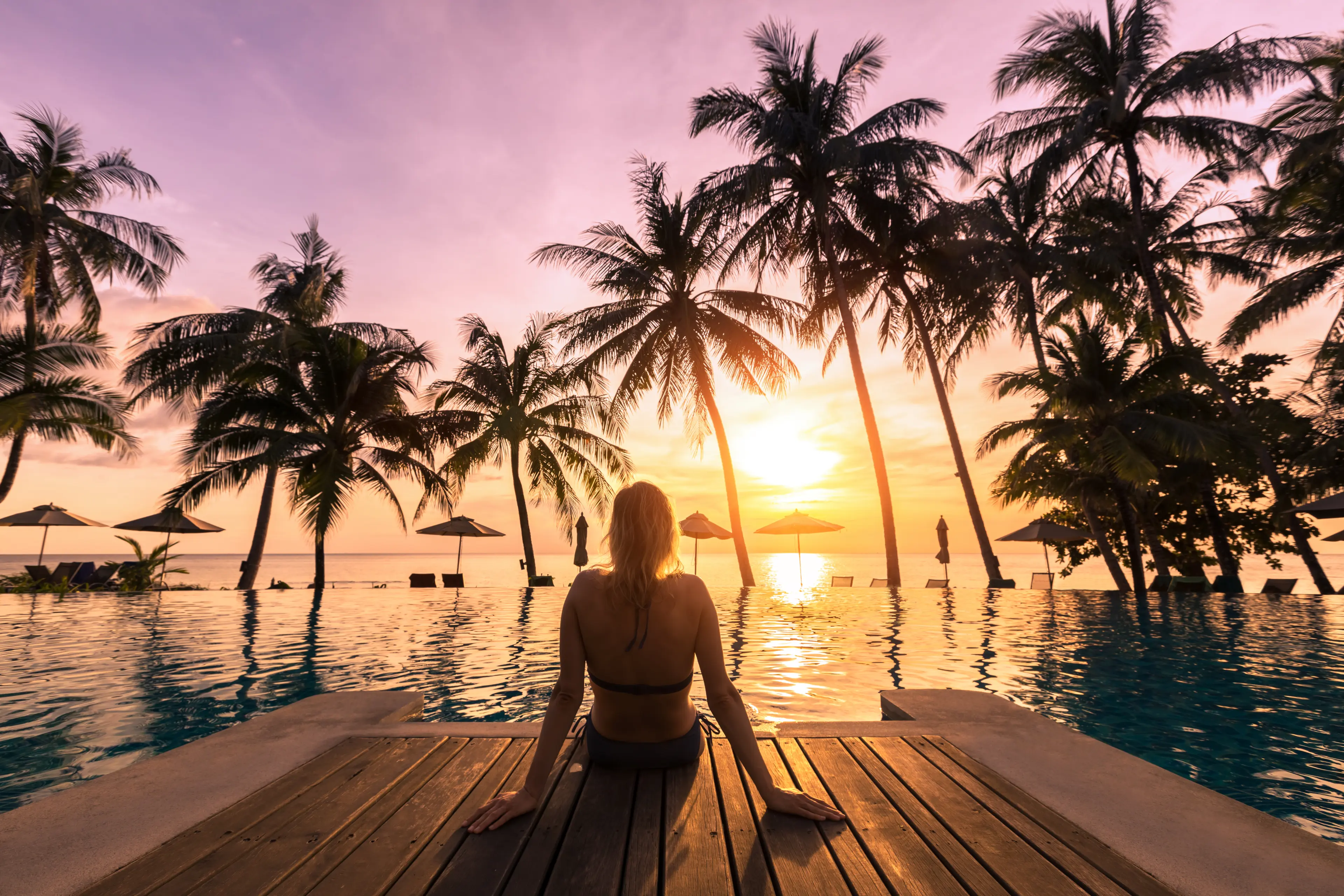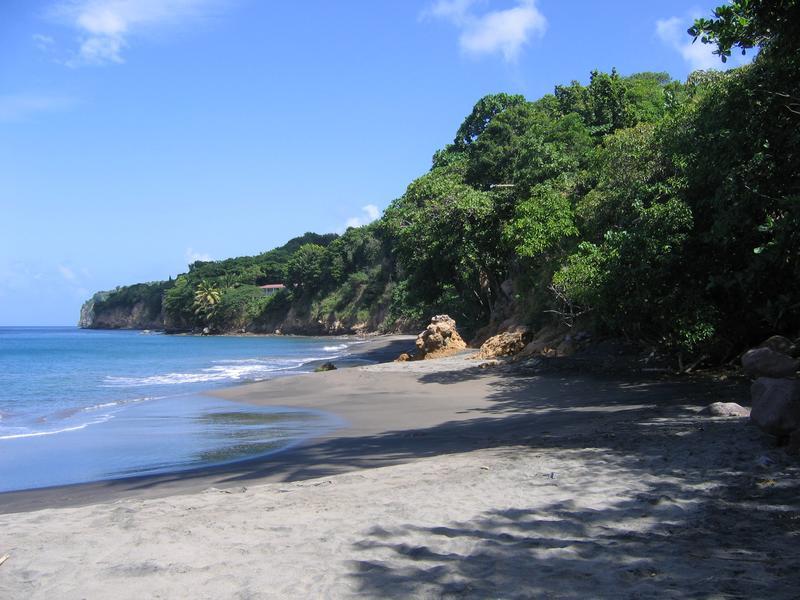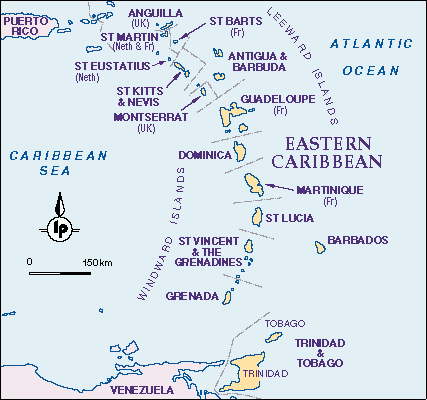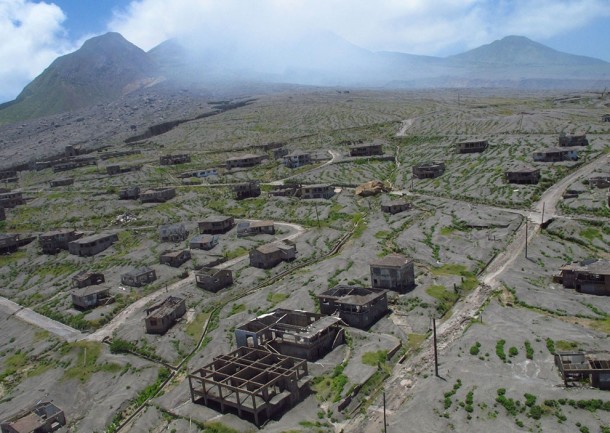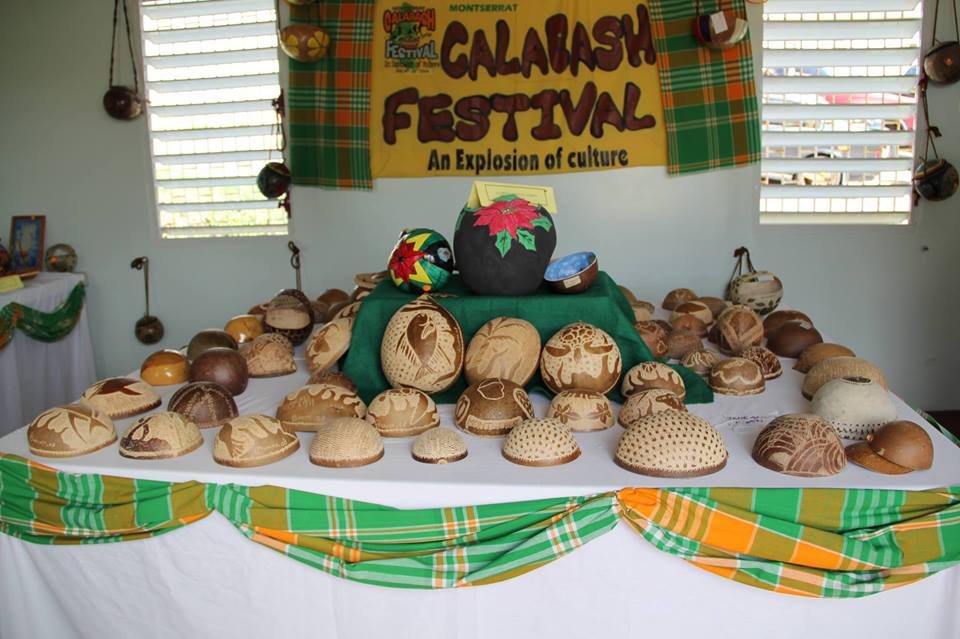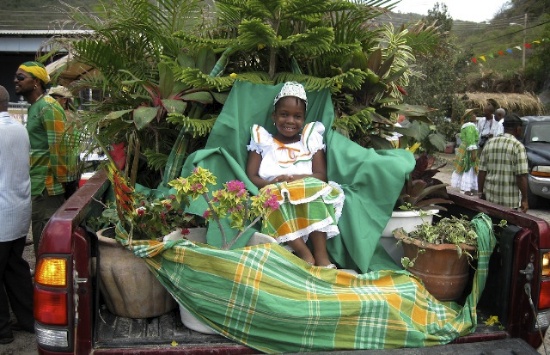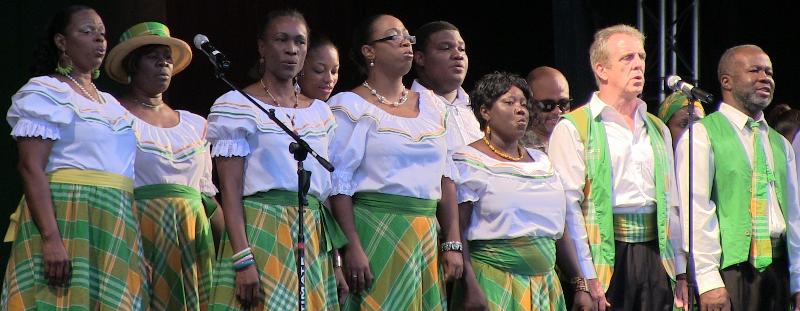Anguilla is a British Overseas Territory or British Dependent Territory in the Caribbean and is one of the most northerly of the Leeward Islands in the Lesser Antilles, lying east of Puerto Rico and the Virgin Islands and directly north of Saint Martin.
 Anguilla Island people of Caribbean wearing their African Heritage dress. Courtesy Wendy G. Gunderson
Anguilla Island people of Caribbean wearing their African Heritage dress. Courtesy Wendy G. Gunderson
(http://w--photography.blogspot.com/2011/01/i-anguilla.html)
The territory of Anguilla which is ranked number one by Travel Channel as world’s best all around beaches, consists of the main island of Anguilla itself, approximately 16 miles (26 km) long by 3 miles (5 km) wide at its widest point, together with a number of much smaller islands and cays with no permanent population. The island's capital is The Valley. The total land area of the territory is 35 square miles (90 km2).

Anguilla, which is inhabited mainly by black Africans of mostly West African ancestry was originally the land of the aboriginal Amerindian Arawak (Caribs) people until Europeans sailor Christopher Columbus sited it alongside twin-islands of Kitts and Nevis. It is argued that, Anguilla may have first been discovered by the French in 1564 or 1565, but it was first colonized by English settlers from Saint Kitts, beginning in 1650.
As at May 2014, the population of Anguilla was estimated at standing at 14,500 people. Out of this number 90.08% are blacks, the descendants of slaves transported from Africa. Growing minorities include whites at 3.74% and people of mixed race (Mulattoes, Amerindians and other ethnic minorities) at 4.65%. The number of white inhabitants are growing as a result of influx of large numbers of Chinese, Indian, and Mexican workers, brought in as labour in 2007 and 2008 for major tourist developments due to the local population not being large enough to support the labour requirements.
According to tradition, Christopher Columbus gave the small, narrow island its name (Anguilla) in 1493 because from the distance it resembled an eel, or in Italian, anguilla. It is also possible that French navigator Pierre Laudonnière gave the island its name from the French anguille.

Anguilla women
Anguilla has 33 pristine beaches and over twelve miles of stunning, white powder sand and tranquil waters ranging from aquamarine to cobalt blue. Beaches of all kinds, from the long, gentle shoreline of Rendezvous Bay perfect for strolling, to the colorful beach bars that rest on the blinding white sands of Shoal Bay.
Anguilla has become a popular tax haven, having no capital gains, estate, profit or other forms of direct taxation on either individuals or corporations. In April 2011, faced with a mounting deficit, it introduced a 3% "Interim Stabilisation Levy", Anguilla's first form of income tax.

Anguillian hospitality
The flag of Anguilla was changed several times in the twentieth century. The present flag consists of a dark blue field with the Union Jack, the flag of Great Britain, in the upper left corner, and Anguilla's crest to the center-right side. The crest consists of a background that is white on top and light blue below and has three gold dolphins jumping in a circle. For official government purposes outside Anguilla, the British flag is used to represent the island.

Anguilla woman (Taitu Kai Goodwin)
Geography
Anguilla is bare and flat and is fringed by white sand beaches. It is 16 miles (26 km) long and a maximum of 3.5 miles (6 km) wide; its long thin shape gave the island its name (French: anguille, “eel”).

The territory includes several small uninhabited offshore islands, the largest of which are Dog, Scrub, and Sombrero islands (Hat Island) and the Prickly Pear Cays. The rest include Anguillita, Seal island, Sandy island, Scilly Cay etc.

Anguilla was formed from coral and limestone. The land is fairly flat but undulating. The highest point, Crocus Hill, has an elevation of 210 feet (64 metres). The northern coast is characterized by short slopes and steep cliffs; the southern coast has a longer and more gradual slope that drops gently to the sea.

The soil layer is thin, but there are small pockets of red loam, mainly in the shallow valleys that are called bottoms. As with most coral islands, fresh water is scarce. The island has no rivers, but there are several surface saltwater ponds, mostly near the coasts, that supplied Anguilla’s salt industry until its collapse in the 1980s.

Anguilla’s highest elevation, Crocus Hill, is 65 m (213 ft). Crocus Hill is among the cliffs that line the northern shore. The numerous bays, including Barnes, Little, Rendezvous, Shoal, and Road Bays, lure many vacationers to this tropical island. The coast and the beautiful, pristine beaches are integral to the tourism-based economy of Anguilla. Because of Anguilla’s warm climate, the beaches can be used year-round.
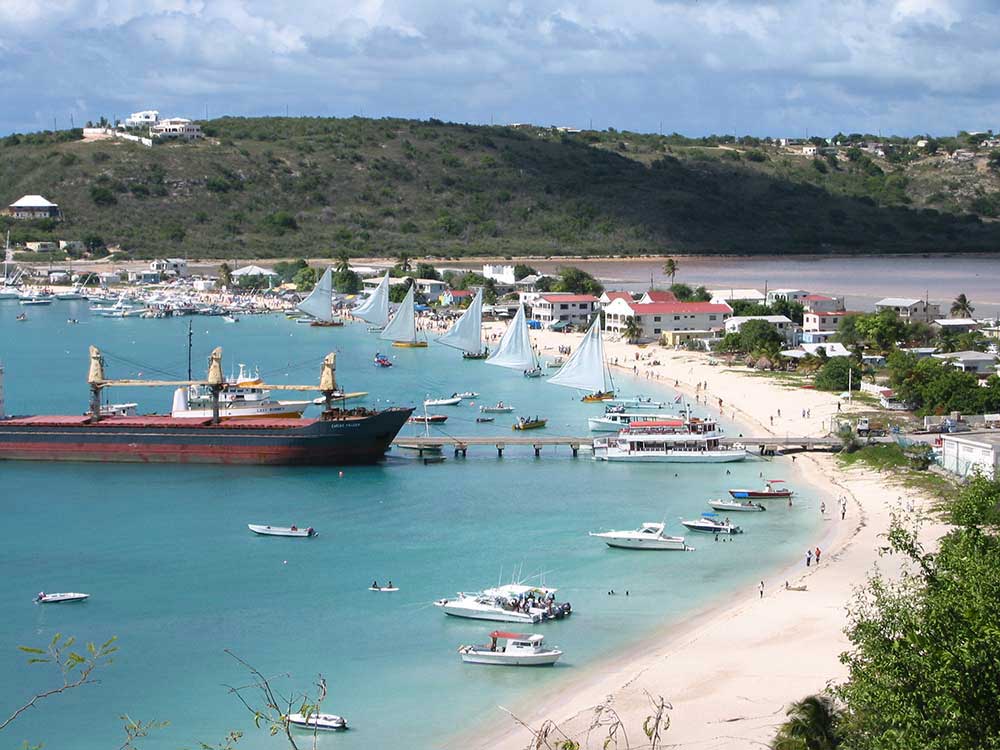
The climate is tropical; the average temperature is in the low 80s °F (about 28 °C), and rainfall averages about 35 inches (900 mm) per year. Hurricanes can occur from June to November and occasionally are highly destructive, such as those of 1995 and 1999. The storms have greatly contributed to the erosion of the island’s beaches. Significant erosion is also caused by indiscriminate sand mining, which has resulted in the disappearance of some beaches. The island’s vegetation consists primarily of small trees and low scrub inland and sea grape along the coasts. There are some plantations of fruit trees. Wildlife on Anguilla includes land reptiles, sea turtles, lobsters, and goats, the latter of which are ubiquitous. There are many bird species, including the national bird, the turtledove; the island is also a popular stop for migratory birds.

Anguilla beach
Language
Anguillians speak standard British English and Anguillian Creole. Anguillan Creole is classified as a part of dialect of Leeward Caribbean Creole English spoken in Saint Kitts and Nevis, Antigua and Montserrat, it is also similar to the British Virgin Islands and Saint Martin varieties of Virgin Islands Creole. The number of speakers of Anguillan Creole is below 10,000. Anguillan Creole does not have the status of an official language.

Other languages are also spoken on the island, including varieties of Spanish, Chinese and the languages of other immigrants. However, the most common language other than Standard English is the island's own English-lexifier Creole language (not to be confused with French Creole spoken in islands such as Haiti, Martinique, and Guadeloupe). It is referred to locally by terms such as "dialect" (pronounced "dialek"), Anguilla Talk, or "Anguillian". It has its main roots in early varieties of English and West African languages, and is similar to the dialects spoken in English-speaking islands throughout the Eastern Caribbean, in terms of its structural features and to the extent of being considered one single language.
Linguists who are interested in the origins of Anguillian and other Caribbean Creoles point out that some of its grammatical features can be traced to African languages while others can be traced to European languages. Three areas have been identified as significant for the identification of the linguistic origins of those forced migrants who arrived before 1710: the Gold Coast (Ghana), the Slave Coast, and the Windward Coast.
Sociohistorical information from Anguilla's archives suggest that Africans and Europeans formed two distinct, but perhaps overlapping speech communities in the early phases of the island's colonisation. "Anguillian" is believed to have emerged as the language of the masses as time passed, slavery was abolished, and locals began to see themselves as "belonging" to Anguillian society.
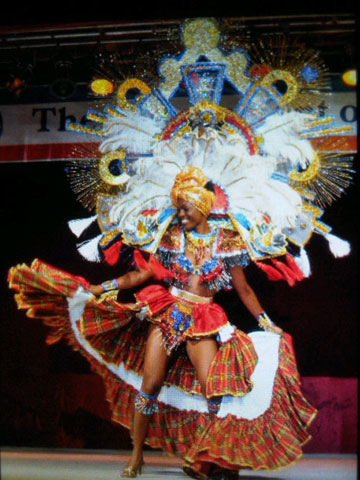
History
The earliest inhabitants of Anguilla were Amerindian tribes from South America, commonly (if imprecisely) referred to as Arawaks, who travelled to the island on rafts and in dugout canoes, settling in fishing, hunting and farming groups. The Amerindian name for the island was "Malliouhana". The earliest Amerindian artefacts found on Anguilla have been dated to around 1300 BC, and remains of settlements dating from 600 AD. have been uncovered. Religious artefacts and remnants of ceremonies found at locations such as Big Springs and Fountain Cavern suggest that the pre-European inhabitants were extremely religious in nature. The Arawaks are popularly said to have been later displaced by fiercer Carib tribes, but this version of events is disputed by some historians.

The European discovery and naming of Anguilla is often credited to French explorer Pierre Laudonnaire who visited the island in 1565, though according to some it had been sighted and named by Columbus i Since the early days of colonisation, Anguilla had been administered by the British through Antigua, with Anguilla also having its own local council. In 1824 the and famine, the settlers kept hanging on. In 1744 Anguillans invaded the French half of the neighbouring island of Saint Martin, holding it until the Treaty of Aix-la-Chapelle (1748). During continuing struggles between the British and the French for control in the Caribbean, the French made further attempts to invade Anguilla in 1745 and 1796 but these failed.
It is likely that some of these early Europeans brought enslaved Africans with them. Historians confirm that African slaves lived in the region in the early 17th century. For example, Africans from Senegal lived in St. Christopher (today St. Kitts) in 1626. By 1672 a slave depot existed on the island of Nevis, serving the Leeward Islands. While the time of African arrival in Anguilla is difficult to place precisely, archival evidence indicates a substantial African presence (at least 100) on the island by 1683.
Attempts were made to develop Anguilla into a plantation-based economy employing slaves transported from Africa, but the island's soil and climate were unfavourable and the plantations were largely unsuccessful. Slaves were permitted to leave the plantations and pursue their own interests, and, with the British abolition of slavery in the 1830s, many plantation owners returned to Europe, leaving Anguilla's community consisting largely of subsistence farmers and fishermen of African descent. At this time Anguilla's population is estimated to have fallen from a peak of around 10,000 to just 2,000.
African Diaspora In Anguilla
The Anguillian population is largely of African descent, their roots dating back to the mid-1600’s when distant ancestors were brought over by British colonists to work on the plantations there. Over the years, attempts were made to grow a variety of crops, including rum, sugar, cotton, indigo, fustic and mahogany, but the arid conditions of the island made the plantation economy difficult to sustain. Many of the British settlers eventually left for other destinations. The African slaves were given permission to maintain their own self-sustaining food plots, in addition to the crops they tended on the plantations .

This created a level of independence long before the official emancipation of slavery by the British on August 1, 1834. By 1838 all slavery on Anguilla had ended and Anguilla became a peasant society living off the land and the sea – a hardworking independent people who now owned the land they lived on. Harsh economic conditions followed for nearly a century, but the people of Anguilla resisted all attempts to relocate them to other Caribbean islands. By the 1900’s many of the islands inhabitants would leave Anguilla for work on neighboring islands like Santo Domingo and Aruba, sailing off in their boats to return weeks or months later, as they sought to provide for their families. Today, there is little evidence of Anguilla’s legacy of slavery and plantation living. The Heritage Collection Museum houses artifacts that showcase both the harsh conditions and the ingenious and inventive ways in which the people of Anguilla coped and created tools for survival by engendering a unique way of life that they called “the jollification”. The Wallblake House, and the Warden’s Place in The Valley are the only plantation houses that remain intact, and are available for guided tours.

There is even less evidence of the time of slavery, although Miss Margerie’s House, located across the road from the Warden’s Place in The Old Valley, has the former slave quarters attached to it. What is left is a culture of independence, pride and resilience born out of the love, loyalty and conviction of a people determined to survive with little help from the outside. Each year, on the first Monday of August, J’ouvert Morning celebrates the anniversary of the British Emancipation Act and kicks off the Caribbean’s biggest and best Beach Party. Visitors are welcome to join the fun as thousands of happy carnival revelers dance through the streets of the capital on their way to Sandy Ground/Road Bay for a full day and night of barbecues, boat racing and pulsating calypso rhythms.Even today, with Anguilla’s elegant hotels and restaurants, high profile visitors and world-class amenities, the island’s principal industry leaders remain committed to sustaining Anguilla’s traditions, culture and personality, a personality that is celebrated in the words of the national motto: strength and endurance.
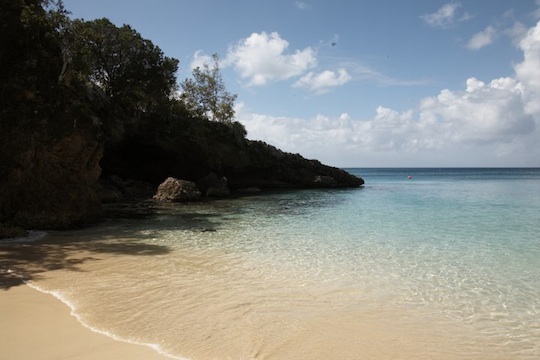
Anguilla
Economy
Anguilla has few natural resources, and the economy depends heavily on luxury tourism, offshore banking, lobster fishing, and remittances from emigrants. Increased activity in the tourism industry has spurred the growth of the construction sector contributing to economic growth.

Anguillan officials have put substantial effort into developing the offshore financial sector, which is small but growing. In the medium term, prospects for the economy will depend largely on the tourism sector and, therefore, on revived income growth in the industrialized nations as well as on favorable weather conditions.

Anguillian pineapple at Fruit market
Agriculture is of minor importance; only a small fraction of the land is under cultivation. The main economic activities revolve around tourism and financial services. The steady increase in tourism has bolstered the construction industries and stimulated the improvement of transport facilities. Anguilla has a small number of labour unions. Since the 1980s offshore banking has become increasingly important but also led to allegations that the island’s banks were being used for money laundering; in 2000 the government began introducing legislation to combat the problem.

Fishing is the traditional livelihood, and both deepwater fishing and aquaculture have expanded. Other traditional industries, especially shipbuilding and the raising of livestock, also continue. Anguilla imports almost all of its food supplies and other consumer items. The export of fish and lobster is an important source of foreign exchange, as are remittances from émigrés working abroad. To further its economic growth, Anguilla became an associate member of the Caribbean Community and Common Market in 1999.
The island’s central bank is the Eastern Caribbean Central Bank, which is also the bank of issue for several other Caribbean islands; Anguilla’s official currency is the Eastern Caribbean dollar, although the U.S. dollar is also readily accepted. The island’s main trading partners are the United States, the United Kingdom, and Puerto Rico. There is no sales or income tax in Anguilla. Instead, the government relies on import duties, taxes on services, corporate registrations, and various licensing fees. The distribution of incomes is fairly equal, and there are few signs of extreme poverty and no discernible slum areas.
Many people own cars, and Anguilla has no bus service, unlike other Caribbean islands, where buses are an integral part of the transportation system. Frequent ferry service takes travelers to and from Marigot, Saint Martin. Wallblake Airport, near The Valley, provides connections to international airports on other islands in the region.

Anguilla beach with its famous authentic white powdery sands
Anguilla is served by Clayton J. Lloyd International Airport (prior to 4 July 2010 known as Wallblake Airport). The primary runway at the airport is 5,462 feet (1,665 m) in length and can accommodate moderate-sized aircraft. Services connect to various other Caribbean islands via regional carrier LIAT, local charter airlines and others. Although there are no direct scheduled flights to or from continental America or Europe, Tradewind Aviation and Cape Air provide scheduled air service to San Juan, Puerto Rico. The airport can handle large narrow-body jets such as the Boeing 727, Boeing 737 and Boeing 757.

Land Tenure and Property. Anguilla's dry climate had always discouraged potential settlers in the past, but with the rise of tourism, land and property values have soared. Strict control of land and inaccessibility to it have helped keep real estate development from growing uncontrollably. Clean beaches and plant and animal life abound. With the end of slavery in the 1830s, land was divided into small plots among the island's residents. A few tourist hotels have been built in recent years, but not the large private resorts found in other parts of the Caribbean.
Division of Labor
Anguilla has a low standard of living, and employment is often unsteady. Many younger Anguillans go abroad to find work, either to Great Britain, the United States, or to other, larger Caribbean islands. Since Anguilla's independence from Saint Kitts and the growth of the tourist sector, unemployment rates have dropped dramatically. There is now a shortage of labor, which has led to delays in some of the government-sponsored economic plans as well as price and wage increases. More work visas are being granted to non-Anguillans, but with the demand for labor high, many Anguillans hold more than one job. The British government provides support for a development and jobs program, and the Caribbean Development Bank also has contributed funds to help provide work and stimulate growth.
Social Stratification
Classes and Castes. There is very minimal class distinction among native Anguillans. The small Caucasian minority is not an elite, power-holding group; likewise, the African-descent majority does not discriminate or economically isolate the ethnic minority.

Anguilla people
Political Life
Government. As Anguilla is a dependent territory of Great Britain, Anguilla's government is under the authority of the British government at Westminster, London. Anguilla's government consists of the governor, the Executive Council, and the House of Assembly. The governor, who holds executive power, is appointed by the British monarch. The governor is responsible for external affairs, internal financial affairs, defense, and internal security. The Executive Council advises the governor. The House of Assembly has two ex officio members, two nominated members, and seven elected members. Other political positions include that of attorney general and secretary to the Executive Council.
Leadership and Political Officials. Before Anguilla became a dependent British territory, the chief minister held executive power. For two decades the position of chief minister alternated between two political rivals: Ronald Webster of the People's Progressive Party, and Emile Gumbs of the Anguilla National Alliance. Several coalition governments were formed during this period as Anguillans sought to obtain total independence from Saint Kitts. The chief executive is now the governor. In 1990 the position of deputy governor was created. The three ruling parties are the Anguilla United Party, the Anguilla Democratic Party, and the Anguilla National Alliance.
Social Problems and Control. Until recently, Anguilla's most urgent social problem was unemployment. The rapid expansion of the economy and the sudden demand for labor have caused unemployment rates to drop dramatically. However, Anguillans must now contend with some of the negative effects of the tourism boom: dealing with large numbers of non-Anguillans who sometimes are insensitive to their customs; pollution; rising prices; a strain on the island's resources; and the influence of other cultures on their way of life. Other social concerns include maintaining their cultural traditions without giving up the benefits of increased trade and business with other countries, improving living standards, and keeping the illegal drug trade out of Anguilla.
Military Activity. Great Britain is responsible for Anguilla's defense. The island has a small police force.
Social Welfare and Change Programs
As a dependent territory, Great Britain provides economic aid and social programs for Anguilla. Other development and welfare programs are supported by the United Nations and the United States. These programs are for general Caribbean economic development, increasing trade and improving living conditions. They also provide assistance in times of natural disaster.
Gender Roles and Statuses
Division of Labor by Gender. More Anguillan women work outside the home than a generation ago, but men still comprise the majority of the workforce. Women own shops or work in the tourist business, in hotels, restaurants, or markets. Women are also employed in agricultural work. However, many women may stop working temporarily when they have young children, returning to work when their children are more independent. Since many businesses and farms are small and family-run, women have a degree of autonomy in work. The recent high demand for labor has also provided jobs for women that previously were nonexistent. Men are more likely than women to be involved in businesses such as fishing, boat construction, and running diving and sailing businesses for tourists.
The Relative Status of Women and Men. General economic and living conditions have improved for all Anguillans. However, more men than women travel abroad to find work, hold political office, and own businesses. The home and family are still considered to be women's main responsibilities, and for the most part women are dependent on male family members or husbands for economic support.

Anguilla woman in her carnival dress
Marriage, Family, and Kinship
Marriage. The extended family is central to Anguillan and West Indian societies in general. Despite the strong influences of the Methodist and Anglican Churches, historically marriage was not considered obligatory for the creation of a family or a domestic living arrangement. During the eighteenth and nineteenth centuries, apart from the small upper class of English landowners, social conditions and slavery made the creation of long-lasting unions very difficult. Men and women frequently lived together in common law marriages for varying lengths of time. It was not infrequent for women and men to have children with more than one partner. Marriage in the Western sense was more likely to occur among the upper and middle classes. Today marriage is considered a cornerstone of family and social life, and weddings are community events.
Domestic Unit. The basic domestic unit is generally a family headed by a mother and father. Under them are their children, often with one or more older relative, such as a grandparent, living under the same roof. As a result of very minimal class and economic differences, Anguillan family life has generally been more stable from a historical point of view than in some other Caribbean islands, where extremely poor economic and social conditions frequently contributed to the breakdown of the domestic unit. The domestic unit is generally stable until children reach adulthood and leave to start their own families. Daughters generally live at home with their parents until they are married.
Inheritance. Today as a British dependent territory, Anguilla's laws governing inheritance are based on Great Britain's. Until recently, inheritance always passed to the oldest son, or to oldest daughter if there were no males heirs. Past inheritance laws also excluded women from holding property.
Kin Groups. The extended family, particularly the network of female family members, often extends to include whole communities in Anguilla. The island's population is descended from the small group of people who arrived there two centuries ago, and as a result family groups are the basis for Anguillan society. Kin groups are extensive yet closely-knit, united by their collective past. A kin group can include many related families living near each other, or families in various parts of the island bound by surname. In terms of domestic organization and management, kin groups are matriarchal in nature, with mother and grandmothers taking responsibility for important family decisions.

Anguilla elder
Socialization
Infant Care. Infants and young children are cared for at home by their mothers or other female relatives. Increased government spending for education has provided funds for early childhood education and care and assistance to working mothers. However, most children remain at home until they begin elementary school at age five.
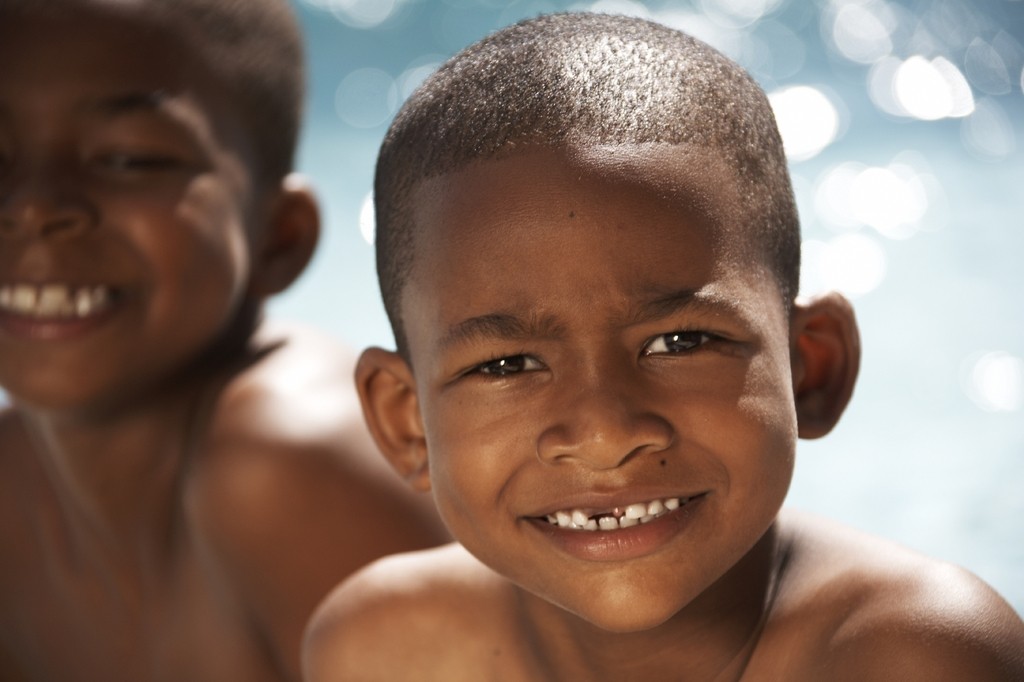
Anguilla kid
Child Rearing and Education. Anguilla, like many other islands of the West Indies, sought to improve literacy rates and educational standards in the second half of the twentieth century. Between the ages of five and fourteen education is obligatory and free through a public school system. There are several primary schools and a secondary school.

Anguillian kids
Higher Education. For advanced, specialized training or a university degree, Anguillans must either go to another Caribbean country or leave the area. In 1948 the University of the West Indies was established in Jamaica to provide higher education for all English-speaking countries in the region. It has created an intellectual center for the West Indies in general and serves as an important contact with the international academic community.
Etiquette
Although the daily pace is generally relaxed and unhurried, Anguillans maintain a degree of formality in public life. Politeness and manners are considered important. As Anguilla's popularity as a tourist destination has grown, Anguillans have found themselves faced with confronting the problems that tourism can bring while trying not to lose an important source of income. Nude sunbathing is strictly prohibited, and wearing swimsuits anywhere outside of beach areas is not permitted. Anguillans always address each other by title—Mr., Mrs., etc.—unless they are on very personal terms. People in positions of importance are addressed using their job title with their last names, such as Nurse Smith or Officer Green. In an effort to maintain its low crime rate, Anguilla also enforces a strict antidrug policy, which includes careful search of all items or luggage brought onto the island.

Anguilliam Rastafarian
Religion
Religion is another aspect of Anguilla's cultural history. The Christian Church did not have a consistent or strong presence across the initial period of English colonization; during this period the spiritual and religious practices of Europeans and Africans tended to reflect their regional origins. However, it should be noted that some Africans are likely to have encountered Christianity prior to their immigration to the island, in West Africa as well as on other Caribbean islands. As early as 1813 Christian ministers formally ministered to enslaved Africans and promoted literacy in English among converts. The Wesleyan Missionary Society of England built churches and schools in 1817.
According to the 2001 census, Christianity is Anguilla's predominant religion, with 36.6 percent of the population practising Anglicanism (including Episcopalianism). Another 23.9 percent are Methodist. Other churches on the island include Seventh-day Adventist, Baptist, Roman Catholic, and Jehovah's Witnesses (0.7%). Between 1992 and 2001 the number of followers of the Church of God and Pentecostal Churches increased considerably. There are at least 15 churches on the island, several of architectural interest. Although a minority on the island, it is an important location to followers of Rastafarian religion – Anguilla is the birthplace of Robert Athlyi Rogers, author of The Holy Piby which has had a strong influence on Rastafarian beliefs. Various other religions are practised as well.
Obeah, which is similar to voodoo and based on religious practices of African slaves brought to Anguilla, also is practiced by some.
Medicine and Health Care
Health standards are good, and birth and death rates are balanced. Anguilla has a small hospital, and limited health care is available through a government health program. For complicated or long-term medical treatment Anguillans must leave the island.
Secular Celebrations
Important secular holidays and celebrations include Anguilla Day, 30 May; the Queen's Birthday, 19 June; Caricom Day, 3 July; Constitution Day, 11 August; and Separation Day, 19 December. Carnival is held the first week of August and includes parades, folk music, traditional dances, competitions, and a street fair. Colorful and elaborate costumes are worn in the Carnival parades, and it is a time for Anguillans to celebrate their history.

Cuisine
Anguillian cuisine is influenced by African, native Caribbean, Spanish, French and English cuisines. Seafood is abundant, and includes prawns, shrimp, crab, spiny lobster, conch, mahi-mahi, red snapper, marlin and grouper. Salt cod is a staple food eaten by itself and used in stews, casseroles and soups. Livestock is limited due to the small size of the island, and people there utilize poultry, pork, goat and mutton, along with imported beef. Goat is the most commonly eaten meat, and is utilized in a variety of dishes.

Anguilla seafood
A significant amount of the island's produce is imported due to limited land suitable for agriculture production; much of the soil is sandy and infertile.Among the agriculture produced in Anguilla includes tomatoes, peppers, limes and other citrus fruits, onion, garlic, squash, pigeon peas and callaloo. Starch staple foods include imported rice and other foods that are imported or locally grown, including yams, sweet potatoes and breadfruit.

Anguilla meal
The Arts and Humanities
Anguilla has several small art galleries, shops that sell local crafts, and a museum with exhibitions relating to Anguillan history, including prehistoric artifacts found on the island. Although there is no permanent theater on the island, various theatrical performances are held regularly. The Anguilla Arts Festival is held every other year and includes workshops, exhibits, and an art competition.
Source:http://www.everyculture.com/A-Bo/Anguilla.html
http://anguillaanguilla.com/anguilla-festivals



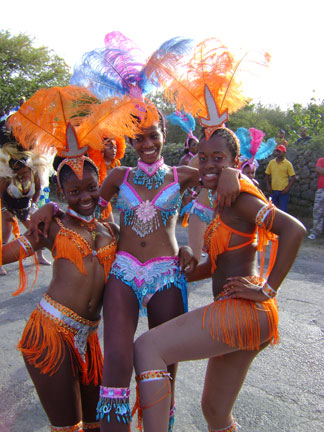














 Anguilla Island people of Caribbean wearing their African Heritage dress. Courtesy Wendy G. Gunderson
Anguilla Island people of Caribbean wearing their African Heritage dress. Courtesy Wendy G. Gunderson(http://w--photography.blogspot.com/2011/01/i-anguilla.html)
The territory of Anguilla which is ranked number one by Travel Channel as world’s best all around beaches, consists of the main island of Anguilla itself, approximately 16 miles (26 km) long by 3 miles (5 km) wide at its widest point, together with a number of much smaller islands and cays with no permanent population. The island's capital is The Valley. The total land area of the territory is 35 square miles (90 km2).

Anguilla, which is inhabited mainly by black Africans of mostly West African ancestry was originally the land of the aboriginal Amerindian Arawak (Caribs) people until Europeans sailor Christopher Columbus sited it alongside twin-islands of Kitts and Nevis. It is argued that, Anguilla may have first been discovered by the French in 1564 or 1565, but it was first colonized by English settlers from Saint Kitts, beginning in 1650.
As at May 2014, the population of Anguilla was estimated at standing at 14,500 people. Out of this number 90.08% are blacks, the descendants of slaves transported from Africa. Growing minorities include whites at 3.74% and people of mixed race (Mulattoes, Amerindians and other ethnic minorities) at 4.65%. The number of white inhabitants are growing as a result of influx of large numbers of Chinese, Indian, and Mexican workers, brought in as labour in 2007 and 2008 for major tourist developments due to the local population not being large enough to support the labour requirements.
According to tradition, Christopher Columbus gave the small, narrow island its name (Anguilla) in 1493 because from the distance it resembled an eel, or in Italian, anguilla. It is also possible that French navigator Pierre Laudonnière gave the island its name from the French anguille.

Anguilla women
Anguilla has 33 pristine beaches and over twelve miles of stunning, white powder sand and tranquil waters ranging from aquamarine to cobalt blue. Beaches of all kinds, from the long, gentle shoreline of Rendezvous Bay perfect for strolling, to the colorful beach bars that rest on the blinding white sands of Shoal Bay.
Anguilla has become a popular tax haven, having no capital gains, estate, profit or other forms of direct taxation on either individuals or corporations. In April 2011, faced with a mounting deficit, it introduced a 3% "Interim Stabilisation Levy", Anguilla's first form of income tax.

Anguillian hospitality
The flag of Anguilla was changed several times in the twentieth century. The present flag consists of a dark blue field with the Union Jack, the flag of Great Britain, in the upper left corner, and Anguilla's crest to the center-right side. The crest consists of a background that is white on top and light blue below and has three gold dolphins jumping in a circle. For official government purposes outside Anguilla, the British flag is used to represent the island.

Anguilla woman (Taitu Kai Goodwin)
Geography
Anguilla is bare and flat and is fringed by white sand beaches. It is 16 miles (26 km) long and a maximum of 3.5 miles (6 km) wide; its long thin shape gave the island its name (French: anguille, “eel”).

The territory includes several small uninhabited offshore islands, the largest of which are Dog, Scrub, and Sombrero islands (Hat Island) and the Prickly Pear Cays. The rest include Anguillita, Seal island, Sandy island, Scilly Cay etc.

Anguilla was formed from coral and limestone. The land is fairly flat but undulating. The highest point, Crocus Hill, has an elevation of 210 feet (64 metres). The northern coast is characterized by short slopes and steep cliffs; the southern coast has a longer and more gradual slope that drops gently to the sea.

The soil layer is thin, but there are small pockets of red loam, mainly in the shallow valleys that are called bottoms. As with most coral islands, fresh water is scarce. The island has no rivers, but there are several surface saltwater ponds, mostly near the coasts, that supplied Anguilla’s salt industry until its collapse in the 1980s.

Anguilla’s highest elevation, Crocus Hill, is 65 m (213 ft). Crocus Hill is among the cliffs that line the northern shore. The numerous bays, including Barnes, Little, Rendezvous, Shoal, and Road Bays, lure many vacationers to this tropical island. The coast and the beautiful, pristine beaches are integral to the tourism-based economy of Anguilla. Because of Anguilla’s warm climate, the beaches can be used year-round.

The climate is tropical; the average temperature is in the low 80s °F (about 28 °C), and rainfall averages about 35 inches (900 mm) per year. Hurricanes can occur from June to November and occasionally are highly destructive, such as those of 1995 and 1999. The storms have greatly contributed to the erosion of the island’s beaches. Significant erosion is also caused by indiscriminate sand mining, which has resulted in the disappearance of some beaches. The island’s vegetation consists primarily of small trees and low scrub inland and sea grape along the coasts. There are some plantations of fruit trees. Wildlife on Anguilla includes land reptiles, sea turtles, lobsters, and goats, the latter of which are ubiquitous. There are many bird species, including the national bird, the turtledove; the island is also a popular stop for migratory birds.

Anguilla beach
Language
Anguillians speak standard British English and Anguillian Creole. Anguillan Creole is classified as a part of dialect of Leeward Caribbean Creole English spoken in Saint Kitts and Nevis, Antigua and Montserrat, it is also similar to the British Virgin Islands and Saint Martin varieties of Virgin Islands Creole. The number of speakers of Anguillan Creole is below 10,000. Anguillan Creole does not have the status of an official language.

Other languages are also spoken on the island, including varieties of Spanish, Chinese and the languages of other immigrants. However, the most common language other than Standard English is the island's own English-lexifier Creole language (not to be confused with French Creole spoken in islands such as Haiti, Martinique, and Guadeloupe). It is referred to locally by terms such as "dialect" (pronounced "dialek"), Anguilla Talk, or "Anguillian". It has its main roots in early varieties of English and West African languages, and is similar to the dialects spoken in English-speaking islands throughout the Eastern Caribbean, in terms of its structural features and to the extent of being considered one single language.
Linguists who are interested in the origins of Anguillian and other Caribbean Creoles point out that some of its grammatical features can be traced to African languages while others can be traced to European languages. Three areas have been identified as significant for the identification of the linguistic origins of those forced migrants who arrived before 1710: the Gold Coast (Ghana), the Slave Coast, and the Windward Coast.
Sociohistorical information from Anguilla's archives suggest that Africans and Europeans formed two distinct, but perhaps overlapping speech communities in the early phases of the island's colonisation. "Anguillian" is believed to have emerged as the language of the masses as time passed, slavery was abolished, and locals began to see themselves as "belonging" to Anguillian society.

Anguilla woman
History
The earliest inhabitants of Anguilla were Amerindian tribes from South America, commonly (if imprecisely) referred to as Arawaks, who travelled to the island on rafts and in dugout canoes, settling in fishing, hunting and farming groups. The Amerindian name for the island was "Malliouhana". The earliest Amerindian artefacts found on Anguilla have been dated to around 1300 BC, and remains of settlements dating from 600 AD. have been uncovered. Religious artefacts and remnants of ceremonies found at locations such as Big Springs and Fountain Cavern suggest that the pre-European inhabitants were extremely religious in nature. The Arawaks are popularly said to have been later displaced by fiercer Carib tribes, but this version of events is disputed by some historians.

The European discovery and naming of Anguilla is often credited to French explorer Pierre Laudonnaire who visited the island in 1565, though according to some it had been sighted and named by Columbus i Since the early days of colonisation, Anguilla had been administered by the British through Antigua, with Anguilla also having its own local council. In 1824 the and famine, the settlers kept hanging on. In 1744 Anguillans invaded the French half of the neighbouring island of Saint Martin, holding it until the Treaty of Aix-la-Chapelle (1748). During continuing struggles between the British and the French for control in the Caribbean, the French made further attempts to invade Anguilla in 1745 and 1796 but these failed.
It is likely that some of these early Europeans brought enslaved Africans with them. Historians confirm that African slaves lived in the region in the early 17th century. For example, Africans from Senegal lived in St. Christopher (today St. Kitts) in 1626. By 1672 a slave depot existed on the island of Nevis, serving the Leeward Islands. While the time of African arrival in Anguilla is difficult to place precisely, archival evidence indicates a substantial African presence (at least 100) on the island by 1683.
Attempts were made to develop Anguilla into a plantation-based economy employing slaves transported from Africa, but the island's soil and climate were unfavourable and the plantations were largely unsuccessful. Slaves were permitted to leave the plantations and pursue their own interests, and, with the British abolition of slavery in the 1830s, many plantation owners returned to Europe, leaving Anguilla's community consisting largely of subsistence farmers and fishermen of African descent. At this time Anguilla's population is estimated to have fallen from a peak of around 10,000 to just 2,000.
Since the early Anguilla under the administrative control of Saint Kitts, later to become part of the colony of Saint Christopher-Nevis-Anguilla (Saint Christopher being an earlier name for Saint Kitts), itself a member of the Federal Colony of the Leeward Islands. Anguillans protested strongly at this arrangement, perceiving a lack of interest in their affairs on the part of the Saint Kitts administration, and several requests were made for the island to be ruled directly from Britain. These requests went unheeded however, and the Anguillans' discontent continued to simmer until finally brought to a head in the 1960s.
On 27 February 1967, Britain granted the territory of Saint Christopher-Nevis-Anguilla the status of "associated state", with its own constitution and a considerable degree of self-government. Many Anguillans strenuously objected to the continuing political subservience to Saint Kitts, and on 30 May (known as Anguilla Day), the Saint Kitts police were evicted from the island. The provisional government requested United States administration, which was declined. On 11 July 1967 a referendum on Anguilla's secession from the fledgling state was held. The results were 1,813 votes for secession and 5 against. A separate legislative council was immediately declared.
Peter Adams served as the first Chairman of the Anguilla Island Council. After eight days of negotiation on Barbados, on July 31, Adams agreed to return Anguilla to the Anguilla-St. Kitts-Nevis federation, in exchange for granting Anguilla limited self-rule similar to that enjoyed by Nevis. Adams agreed to support this pact in principle, but the Council rejected it, replacing Adams as Chairman with Ronald Webster. In December 1967, two members of Britain's Parliament worked out an interim agreement by which for one year a British official would exercise basic administrative authority along with the Anguilla Council. Tony Lee took the position in January 1968, but by the end of the term no agreement have been reached on the long-term future of the island's government.
On February 7, 1969 Anguilla held a second referendum resulting in a vote of 1,739 to 4 against returning to association with Saint Kitts. At this point Anguilla declared itself an independent republic, with Webster again serving as Chairman. A new British envoy, William Whitlock, arrived on 11 March 1969 with a proposal for a new interim British administration. He was quickly expelled. On 19 March a contingent of 2nd Battalion, The Parachute Regiment plus 40 Metropolitan Police officers, peacefully landed on the island, ostensibly to "restore order". That autumn the troops left and Army engineers were brought in to improve the public works.
Tony Lee returned as Commissioner and in 1971 worked out another "interim agreement" with the islanders. Effectively Anguilla was allowed to secede from Saint Kitts and Nevis; however it was not until 19 December 1980 that Anguilla formally disassociated itself from Saint Kitts to become a separate British dependency. While Saint Kitts and Nevis went on to gain full independence from Britain in 1983, Anguilla still remains a British overseas territory.
In recent years Anguilla has become an up-market tourist destination, and tourism is one of the mainstays of the economy. Fishing is another important economic activity, and a financial services sector is also being developed. The modern population of Anguilla is largely of African descent, with a minority having European (mainly English) ancestry.
The Anguillian population is largely of African descent, their roots dating back to the mid-1600’s when distant ancestors were brought over by British colonists to work on the plantations there. Over the years, attempts were made to grow a variety of crops, including rum, sugar, cotton, indigo, fustic and mahogany, but the arid conditions of the island made the plantation economy difficult to sustain. Many of the British settlers eventually left for other destinations. The African slaves were given permission to maintain their own self-sustaining food plots, in addition to the crops they tended on the plantations .

This created a level of independence long before the official emancipation of slavery by the British on August 1, 1834. By 1838 all slavery on Anguilla had ended and Anguilla became a peasant society living off the land and the sea – a hardworking independent people who now owned the land they lived on. Harsh economic conditions followed for nearly a century, but the people of Anguilla resisted all attempts to relocate them to other Caribbean islands. By the 1900’s many of the islands inhabitants would leave Anguilla for work on neighboring islands like Santo Domingo and Aruba, sailing off in their boats to return weeks or months later, as they sought to provide for their families. Today, there is little evidence of Anguilla’s legacy of slavery and plantation living. The Heritage Collection Museum houses artifacts that showcase both the harsh conditions and the ingenious and inventive ways in which the people of Anguilla coped and created tools for survival by engendering a unique way of life that they called “the jollification”. The Wallblake House, and the Warden’s Place in The Valley are the only plantation houses that remain intact, and are available for guided tours.

There is even less evidence of the time of slavery, although Miss Margerie’s House, located across the road from the Warden’s Place in The Old Valley, has the former slave quarters attached to it. What is left is a culture of independence, pride and resilience born out of the love, loyalty and conviction of a people determined to survive with little help from the outside. Each year, on the first Monday of August, J’ouvert Morning celebrates the anniversary of the British Emancipation Act and kicks off the Caribbean’s biggest and best Beach Party. Visitors are welcome to join the fun as thousands of happy carnival revelers dance through the streets of the capital on their way to Sandy Ground/Road Bay for a full day and night of barbecues, boat racing and pulsating calypso rhythms.Even today, with Anguilla’s elegant hotels and restaurants, high profile visitors and world-class amenities, the island’s principal industry leaders remain committed to sustaining Anguilla’s traditions, culture and personality, a personality that is celebrated in the words of the national motto: strength and endurance.

Anguilla
Economy
Anguilla has few natural resources, and the economy depends heavily on luxury tourism, offshore banking, lobster fishing, and remittances from emigrants. Increased activity in the tourism industry has spurred the growth of the construction sector contributing to economic growth.

Anguillan officials have put substantial effort into developing the offshore financial sector, which is small but growing. In the medium term, prospects for the economy will depend largely on the tourism sector and, therefore, on revived income growth in the industrialized nations as well as on favorable weather conditions.

Anguillian pineapple at Fruit market
Agriculture is of minor importance; only a small fraction of the land is under cultivation. The main economic activities revolve around tourism and financial services. The steady increase in tourism has bolstered the construction industries and stimulated the improvement of transport facilities. Anguilla has a small number of labour unions. Since the 1980s offshore banking has become increasingly important but also led to allegations that the island’s banks were being used for money laundering; in 2000 the government began introducing legislation to combat the problem.

Fishing is the traditional livelihood, and both deepwater fishing and aquaculture have expanded. Other traditional industries, especially shipbuilding and the raising of livestock, also continue. Anguilla imports almost all of its food supplies and other consumer items. The export of fish and lobster is an important source of foreign exchange, as are remittances from émigrés working abroad. To further its economic growth, Anguilla became an associate member of the Caribbean Community and Common Market in 1999.
The island’s central bank is the Eastern Caribbean Central Bank, which is also the bank of issue for several other Caribbean islands; Anguilla’s official currency is the Eastern Caribbean dollar, although the U.S. dollar is also readily accepted. The island’s main trading partners are the United States, the United Kingdom, and Puerto Rico. There is no sales or income tax in Anguilla. Instead, the government relies on import duties, taxes on services, corporate registrations, and various licensing fees. The distribution of incomes is fairly equal, and there are few signs of extreme poverty and no discernible slum areas.
Many people own cars, and Anguilla has no bus service, unlike other Caribbean islands, where buses are an integral part of the transportation system. Frequent ferry service takes travelers to and from Marigot, Saint Martin. Wallblake Airport, near The Valley, provides connections to international airports on other islands in the region.
Anguilla beach with its famous authentic white powdery sands
Anguilla is served by Clayton J. Lloyd International Airport (prior to 4 July 2010 known as Wallblake Airport). The primary runway at the airport is 5,462 feet (1,665 m) in length and can accommodate moderate-sized aircraft. Services connect to various other Caribbean islands via regional carrier LIAT, local charter airlines and others. Although there are no direct scheduled flights to or from continental America or Europe, Tradewind Aviation and Cape Air provide scheduled air service to San Juan, Puerto Rico. The airport can handle large narrow-body jets such as the Boeing 727, Boeing 737 and Boeing 757.

Land Tenure and Property. Anguilla's dry climate had always discouraged potential settlers in the past, but with the rise of tourism, land and property values have soared. Strict control of land and inaccessibility to it have helped keep real estate development from growing uncontrollably. Clean beaches and plant and animal life abound. With the end of slavery in the 1830s, land was divided into small plots among the island's residents. A few tourist hotels have been built in recent years, but not the large private resorts found in other parts of the Caribbean.
Division of Labor
Anguilla has a low standard of living, and employment is often unsteady. Many younger Anguillans go abroad to find work, either to Great Britain, the United States, or to other, larger Caribbean islands. Since Anguilla's independence from Saint Kitts and the growth of the tourist sector, unemployment rates have dropped dramatically. There is now a shortage of labor, which has led to delays in some of the government-sponsored economic plans as well as price and wage increases. More work visas are being granted to non-Anguillans, but with the demand for labor high, many Anguillans hold more than one job. The British government provides support for a development and jobs program, and the Caribbean Development Bank also has contributed funds to help provide work and stimulate growth.
Social Stratification
Classes and Castes. There is very minimal class distinction among native Anguillans. The small Caucasian minority is not an elite, power-holding group; likewise, the African-descent majority does not discriminate or economically isolate the ethnic minority.

Anguilla people
Political Life
Government. As Anguilla is a dependent territory of Great Britain, Anguilla's government is under the authority of the British government at Westminster, London. Anguilla's government consists of the governor, the Executive Council, and the House of Assembly. The governor, who holds executive power, is appointed by the British monarch. The governor is responsible for external affairs, internal financial affairs, defense, and internal security. The Executive Council advises the governor. The House of Assembly has two ex officio members, two nominated members, and seven elected members. Other political positions include that of attorney general and secretary to the Executive Council.
Leadership and Political Officials. Before Anguilla became a dependent British territory, the chief minister held executive power. For two decades the position of chief minister alternated between two political rivals: Ronald Webster of the People's Progressive Party, and Emile Gumbs of the Anguilla National Alliance. Several coalition governments were formed during this period as Anguillans sought to obtain total independence from Saint Kitts. The chief executive is now the governor. In 1990 the position of deputy governor was created. The three ruling parties are the Anguilla United Party, the Anguilla Democratic Party, and the Anguilla National Alliance.
Social Problems and Control. Until recently, Anguilla's most urgent social problem was unemployment. The rapid expansion of the economy and the sudden demand for labor have caused unemployment rates to drop dramatically. However, Anguillans must now contend with some of the negative effects of the tourism boom: dealing with large numbers of non-Anguillans who sometimes are insensitive to their customs; pollution; rising prices; a strain on the island's resources; and the influence of other cultures on their way of life. Other social concerns include maintaining their cultural traditions without giving up the benefits of increased trade and business with other countries, improving living standards, and keeping the illegal drug trade out of Anguilla.
Military Activity. Great Britain is responsible for Anguilla's defense. The island has a small police force.
Social Welfare and Change Programs
As a dependent territory, Great Britain provides economic aid and social programs for Anguilla. Other development and welfare programs are supported by the United Nations and the United States. These programs are for general Caribbean economic development, increasing trade and improving living conditions. They also provide assistance in times of natural disaster.
Gender Roles and Statuses
Division of Labor by Gender. More Anguillan women work outside the home than a generation ago, but men still comprise the majority of the workforce. Women own shops or work in the tourist business, in hotels, restaurants, or markets. Women are also employed in agricultural work. However, many women may stop working temporarily when they have young children, returning to work when their children are more independent. Since many businesses and farms are small and family-run, women have a degree of autonomy in work. The recent high demand for labor has also provided jobs for women that previously were nonexistent. Men are more likely than women to be involved in businesses such as fishing, boat construction, and running diving and sailing businesses for tourists.
The Relative Status of Women and Men. General economic and living conditions have improved for all Anguillans. However, more men than women travel abroad to find work, hold political office, and own businesses. The home and family are still considered to be women's main responsibilities, and for the most part women are dependent on male family members or husbands for economic support.

Anguilla woman in her carnival dress
Marriage, Family, and Kinship
Marriage. The extended family is central to Anguillan and West Indian societies in general. Despite the strong influences of the Methodist and Anglican Churches, historically marriage was not considered obligatory for the creation of a family or a domestic living arrangement. During the eighteenth and nineteenth centuries, apart from the small upper class of English landowners, social conditions and slavery made the creation of long-lasting unions very difficult. Men and women frequently lived together in common law marriages for varying lengths of time. It was not infrequent for women and men to have children with more than one partner. Marriage in the Western sense was more likely to occur among the upper and middle classes. Today marriage is considered a cornerstone of family and social life, and weddings are community events.
Domestic Unit. The basic domestic unit is generally a family headed by a mother and father. Under them are their children, often with one or more older relative, such as a grandparent, living under the same roof. As a result of very minimal class and economic differences, Anguillan family life has generally been more stable from a historical point of view than in some other Caribbean islands, where extremely poor economic and social conditions frequently contributed to the breakdown of the domestic unit. The domestic unit is generally stable until children reach adulthood and leave to start their own families. Daughters generally live at home with their parents until they are married.
Inheritance. Today as a British dependent territory, Anguilla's laws governing inheritance are based on Great Britain's. Until recently, inheritance always passed to the oldest son, or to oldest daughter if there were no males heirs. Past inheritance laws also excluded women from holding property.
Kin Groups. The extended family, particularly the network of female family members, often extends to include whole communities in Anguilla. The island's population is descended from the small group of people who arrived there two centuries ago, and as a result family groups are the basis for Anguillan society. Kin groups are extensive yet closely-knit, united by their collective past. A kin group can include many related families living near each other, or families in various parts of the island bound by surname. In terms of domestic organization and management, kin groups are matriarchal in nature, with mother and grandmothers taking responsibility for important family decisions.

Anguilla elder
Socialization
Infant Care. Infants and young children are cared for at home by their mothers or other female relatives. Increased government spending for education has provided funds for early childhood education and care and assistance to working mothers. However, most children remain at home until they begin elementary school at age five.

Anguilla kid
Child Rearing and Education. Anguilla, like many other islands of the West Indies, sought to improve literacy rates and educational standards in the second half of the twentieth century. Between the ages of five and fourteen education is obligatory and free through a public school system. There are several primary schools and a secondary school.

Anguillian kids
Higher Education. For advanced, specialized training or a university degree, Anguillans must either go to another Caribbean country or leave the area. In 1948 the University of the West Indies was established in Jamaica to provide higher education for all English-speaking countries in the region. It has created an intellectual center for the West Indies in general and serves as an important contact with the international academic community.
Etiquette
Although the daily pace is generally relaxed and unhurried, Anguillans maintain a degree of formality in public life. Politeness and manners are considered important. As Anguilla's popularity as a tourist destination has grown, Anguillans have found themselves faced with confronting the problems that tourism can bring while trying not to lose an important source of income. Nude sunbathing is strictly prohibited, and wearing swimsuits anywhere outside of beach areas is not permitted. Anguillans always address each other by title—Mr., Mrs., etc.—unless they are on very personal terms. People in positions of importance are addressed using their job title with their last names, such as Nurse Smith or Officer Green. In an effort to maintain its low crime rate, Anguilla also enforces a strict antidrug policy, which includes careful search of all items or luggage brought onto the island.

Anguilliam Rastafarian
Religion
Religion is another aspect of Anguilla's cultural history. The Christian Church did not have a consistent or strong presence across the initial period of English colonization; during this period the spiritual and religious practices of Europeans and Africans tended to reflect their regional origins. However, it should be noted that some Africans are likely to have encountered Christianity prior to their immigration to the island, in West Africa as well as on other Caribbean islands. As early as 1813 Christian ministers formally ministered to enslaved Africans and promoted literacy in English among converts. The Wesleyan Missionary Society of England built churches and schools in 1817.
According to the 2001 census, Christianity is Anguilla's predominant religion, with 36.6 percent of the population practising Anglicanism (including Episcopalianism). Another 23.9 percent are Methodist. Other churches on the island include Seventh-day Adventist, Baptist, Roman Catholic, and Jehovah's Witnesses (0.7%). Between 1992 and 2001 the number of followers of the Church of God and Pentecostal Churches increased considerably. There are at least 15 churches on the island, several of architectural interest. Although a minority on the island, it is an important location to followers of Rastafarian religion – Anguilla is the birthplace of Robert Athlyi Rogers, author of The Holy Piby which has had a strong influence on Rastafarian beliefs. Various other religions are practised as well.
Obeah, which is similar to voodoo and based on religious practices of African slaves brought to Anguilla, also is practiced by some.
Medicine and Health Care
Health standards are good, and birth and death rates are balanced. Anguilla has a small hospital, and limited health care is available through a government health program. For complicated or long-term medical treatment Anguillans must leave the island.
Secular Celebrations
Important secular holidays and celebrations include Anguilla Day, 30 May; the Queen's Birthday, 19 June; Caricom Day, 3 July; Constitution Day, 11 August; and Separation Day, 19 December. Carnival is held the first week of August and includes parades, folk music, traditional dances, competitions, and a street fair. Colorful and elaborate costumes are worn in the Carnival parades, and it is a time for Anguillans to celebrate their history.

Anguilla carnival
Cuisine
Anguillian cuisine is influenced by African, native Caribbean, Spanish, French and English cuisines. Seafood is abundant, and includes prawns, shrimp, crab, spiny lobster, conch, mahi-mahi, red snapper, marlin and grouper. Salt cod is a staple food eaten by itself and used in stews, casseroles and soups. Livestock is limited due to the small size of the island, and people there utilize poultry, pork, goat and mutton, along with imported beef. Goat is the most commonly eaten meat, and is utilized in a variety of dishes.

Anguilla seafood
A significant amount of the island's produce is imported due to limited land suitable for agriculture production; much of the soil is sandy and infertile.Among the agriculture produced in Anguilla includes tomatoes, peppers, limes and other citrus fruits, onion, garlic, squash, pigeon peas and callaloo. Starch staple foods include imported rice and other foods that are imported or locally grown, including yams, sweet potatoes and breadfruit.

Anguilla meal
The Arts and Humanities
Anguilla has several small art galleries, shops that sell local crafts, and a museum with exhibitions relating to Anguillan history, including prehistoric artifacts found on the island. Although there is no permanent theater on the island, various theatrical performances are held regularly. The Anguilla Arts Festival is held every other year and includes workshops, exhibits, and an art competition.
Sports
Boat racing: Sailing in Anguilla has a long and deep history, and is one of the defining characteristics of the island. The history of Anguillian sailing is often indistinguishable from the history of the island itself. Sailing craft date back to the Taino and Arawak peoples who inhabited Anguilla before the British Colonisation. However these craft have had little influence on the unique sailing practiced in Anguilla. Instead, it originated from the fishing vessels constructed and built locally after colonization and the subsequent collapse of the local plantation system to provide food and modest income to the inhabitants.
"The Battle of Anguilla"
The earliest reference to sailing in Anguillian history involves what is unofficially known as "The Battle of Anguilla". In 1796, during the height of the Napoleonic Wars, 400 men were dispatched from the neighboring French colony of St. Martin aboard two frigates, Le Decius and Le Valiant. This force landed on what is now known as Rendezvous Bay. An Anguillian defense force was led by Lieutenant Governor Benjamin Gumbs, and for the next four days they were beaten back through the capital of The Valley and onto Sandy Hill, where they fortified themselves in a former Dutch Fort. Desperate for ammunition, they were said to have used lead weights from fishing nets and musket shot, and an Anguillian sailing ship was sent to St. Kitts to request aid. This ship, whose name was not recorded, came into contact with the H.M.S. Lapwing led by Commander Barton. Barton acted swiftly to relieve Anguilla, and the Lapwing's presence drove the French to attempt to retreat. Le Decius and Le Valiant fled and attempted to escape the British frigate, leaving the soldiers stranded. They surrendered to the Anguillian forces, were imprisoned and then massacred in retaliation for the massive amount of damage inflicted by the invaders. The Lapwing sank Le Decius and drove the Le Valiant onto the rocks in St. Martin, where it was set ablaze.
The Battle of Anguilla had several interesting cultural effects on the island. Rendezvous was named because it was the site where the French held their "rendezvous" for the invasion. Lead sinker balls are referred to locally as "bullets" after the desperate attempts of the besieged militia. However, the main effect was a result of the devastation inflicted on the plantations, in addition to the island's naturally arid climate and hurricanes doomed large scale agricultural efforts. By 1821, plantations were almost totally eliminated. Despite this, Anguillian subsistence farmers managed to grow corn, pigeon peas and other staples. The surplus of especially good yields was shipped overseas. However, as a result of the failure to maintain effectively the only profitable economy it could as a British colony it fell into poverty. Twice, in 1832 and 1843, the Governor of the Leeward Islands recommended a complete evacuation of the island and resettlement of the residents to Guyana and Trinidad. With no other alternative, the Anguillian people turned to maritime occupations - fishermen, shipwrights, riggers and traders.
It is considered ironic that the name of the Anguillian ship which was sent for rescue, almost undoubtedly the forerunner of the modern Anguillian racing boat was lost, while the name of the Lapwing survives as a favored name for boats even today, especially among the police force boats.
Ragattas:T here are regular sailing regattas on national holidays which are contested by locally built and designed boats. These regattas do not conform to international sailing rules with regard to right of way. Instead, there is only one rule, known as the "hard lee" rule. (The name derives from the motion required to tack a tiller boat, which is to push the tiller "hard to leeward"). In the event that two boats on opposite tacks are on a collision course, one or both of the captains may elect to call "hard lee" to the other. When this call is made, both boats must tack regardless of whether it is advantageous or not. The objective of this manoeuvre is to attempt to gain as much distance upwind as possible before having to tack to avoid a collision. Alternatively, one captain may decide to "draw" and either tack earlier or change his point of sail to avoid the manoeuvre. This means a loss in height, but it may be preferable to tacking towards a shallow reef or other unfavourable position.
Cricket: As in many other former British Colonies, cricket is also a popular sport. Anguilla is the home of Omari Banks, who played for the West Indies Cricket Team, while Cardigan Connor played first-class cricket for English county side Hampshire and was 'chef de mission' (team manager) for Anguilla's Commonwealth Games team in 2002.
Rugby: Rugby union is represented in Anguilla by the Anguilla Eels RFC, who were formed in April 2006.[ The Eels have been finalists in the St. Martin tournament in November 2006 and semi finalists in 2007, 2008, 2009 and Champions in 2010. The Eels were formed in 2006 by Scottish club national second row Martin Welsh, Club Sponsor and President of the AERFC Ms Jacquie Ruan, and Canadian standout Scrumhalf Mark Harris (Toronto Scottish RFC). The club was lucky enough to host the HMS Iron Duke in September 2008 which saw a very spirited game going to the visitors 18-13. The St Barts Barracudas have also been to Anguilla to play the Eels also prevailing eleven points to six.
http://anguillaanguilla.com/anguilla-festivals


























